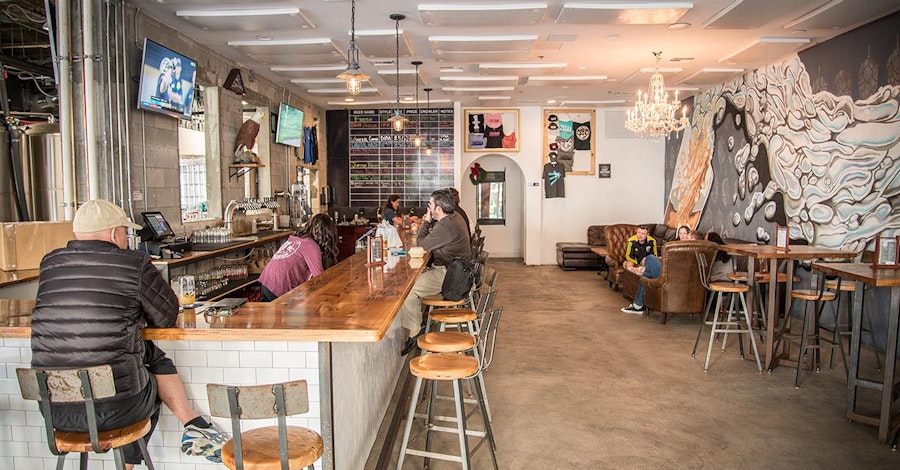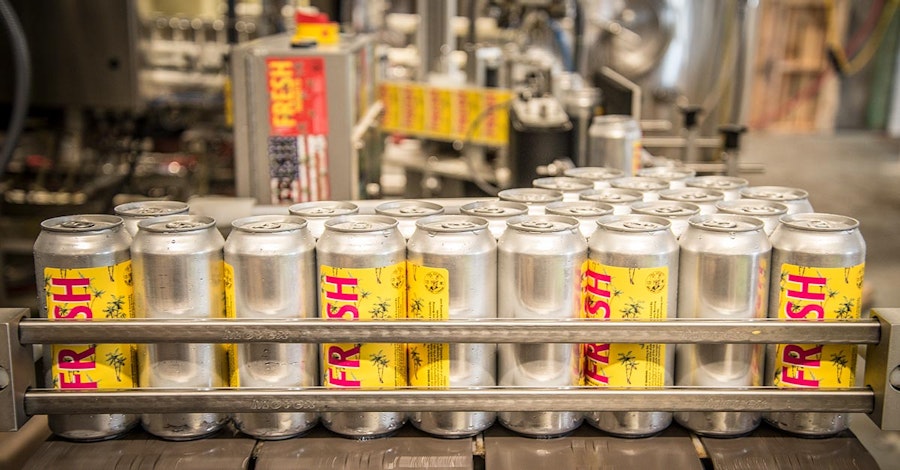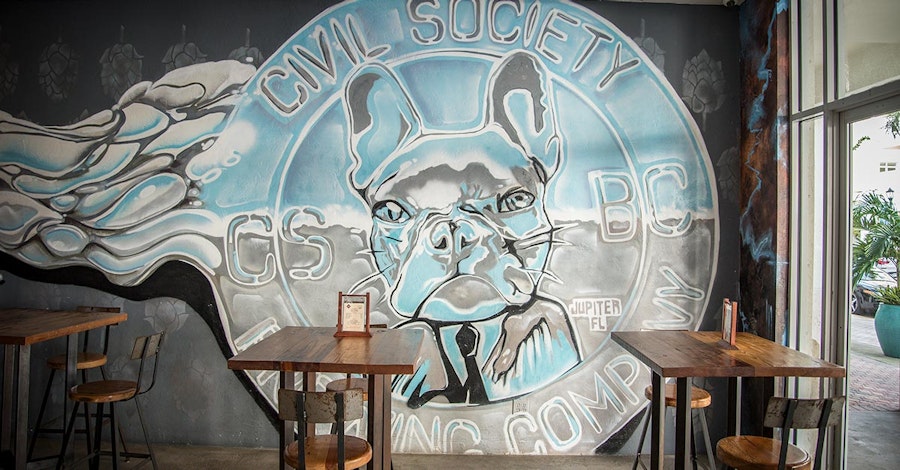Maybe it’s easier to brew genre-busting styles in a state such as Florida where the average craft-beer fan has fewer expectations. In places with longer-standing brewing traditions, such as San Diego or Chicago, brewing a turbid IPA chock full of fruity hops notes could be seen by some as an affront. But Florida is still on the frontend of the craft-beer curve, and Civil Society has taken full advantage of that eager open-mindedness by focusing on flavor-forward beers with only the faintest nod to tradition. And while other Florida brewers have generated excitement by focusing on culinary flavors—sweet dessert stouts and fruit-forward tart weisse beers—Civil Society is all about the hops.
“We mold our beers around hops, for the most part,” says Cofounder and Head Brewer Karl Volstad. “Most of our lineup is hops-forward. We like to explore how hops work together, so we do a lot of series of beers where we’ll pair [different] hops together.”
Volstad got his start in beer as a trader, scouring shelves for the latest and greatest that he could trade for beers not available in South Florida. That engagement with craft beer and a love for styles not readily available led him next to homebrewing, where he could make the exact beer he wanted to drink.
Launching a brewery was a culmination of that interest, and together with his cousin, Major League Baseball pitcher Chris Volstad, longtime friend and homebrewing buddy Evan Miller, and younger brother Kaleb, Volstad has put together a brewery that’s as much about family as it is about beer. 
When it comes to brewing, he’s an open book. “It doesn’t bother me to talk about process because I don’t think anybody can really do exactly what we do here,” says Volstad. “And likewise, I can’t do what people do in other places because there’s so much more that goes into the finished product.”
Because Florida water is all pumped from a rather shallow aquifer, water treatment is a must. Every Civil Society beer starts with water zeroed out through a reverse-osmosis treatment system. “Water in Florida sucks for brewing. Darker beers you’re okay, but for lighter beers, it’s just no bueno. That may be why stouts have become so popular in Florida.”
Volstad builds his hoppy beers with a hefty helping of base malt—typically 80–90 percent Canadian 2-row barley but occasionally Thomas Fawcett Golden Promise Pale Malt or Pearl—and smaller amounts of wheat or oats for body without flavor contribution.
“We design our beers so the malt doesn’t get in the way. We want the hops to shine. I want there to be some presence, but I want as minimal malt flavor as possible because the hops should be in the forefront of the picture,” says Volstad.
That approach to hops is fairly dynamic, shifting as the hops themselves change from crop year to crop year, farm to farm. Their flagship IPA, Fresh, started as a homebrew recipe with Citra, Columbus, and Amarillo, but as Amarillo became harder to get, they phased it out of the recipe, and found they ultimately liked the beer more with just Citra and Columbus.
“Citra and the Columbus [in Fresh] really play well together. You have that dank and earthy piney character, but you also pull a lot of citrus character out of the Columbus, and Citra is just a tropical fruit smoothie.”
With Pulp, an all-Mosaic pale wheat ale, they ran into a challenge when they switched providers for the Mosaic hops. “It just didn’t pop the same way,” says Volstad. “Two batches into it, we went back to the hops we were getting from the other company, and sure enough—it was night and day difference. So now, Pulp always uses hops from this one provider, and we’re very specific about that now because we got the flavors we really wanted out of it.”
“Mosaic has the ability to be fruit-forward, but it also has a dank undertone, and the dankness just wasn’t there, or when it was there, it was a kind of piney dankness going back to the C-hops style. We wanted more of the fruity over-the-top dankness, and it just didn’t have that.” 
Volstad honed his hops blending skills through homebrewing, where the batch size meant the stakes were low. It was a perfect laboratory for teasing out the effects of hops interactions. Certain hops, he’s found, work best not in equal amounts but in smaller proportions to highlight the character of other hops.
“Ekuanot is one of those for me,” says Volstad. “It can dominate sometimes, but if you add only a little bit, it can really accentuate the other hops in the blend. Vic’s Secret is another one. I really like using it, but by itself, it didn’t pull the flavors out that I really wanted and I found out that by itself, it just doesn’t pop as much. But when you use it with other hops, it really makes them pop like crazy. Vic’s Secret and Citra, Vic’s Secret and Galaxy.”
On the fermentation side, they do occasionally use various London Ale yeasts for collaboration beers and one-offs, but Vermont Ale yeast is their brewery workhorse because it flocculates consistently, creates a great tasting beer, and is stable through more generations than some other expressive yeasts typically used in New England–style IPAs.
“The flocculation on London III for whatever reason for us—we cannot get it to drop out. It takes forever. It’s hard for us to even get enough yeast out for a second pitch. We used it again recently in collabs we did with The Answer Brewpub (Richmond, Virginia) and Magnify Brewing Company (Fairfield, New Jersey), and the beers turned out great, but I still prefer Vermont Ale yeast for our beers.”
The collaborative nature of the brewery has become a defining element of the brewery, and it’s one that Volstad considers equal parts fun and educational. “Besides collabs being a lot of fun, I learn a lot. You engage with people who do the things that you do. I get a lot out of talking to owners of other breweries, whether that’s asking questions such as ‘Where do you get your hops from?’ or ‘How do you handle this kind of situation with your employees?’ What better way to get information about what does and doesn’t work than to spend time with somebody else who’s doing the same thing you’re doing?” 
Beyond the information sharing, Volstad admits that the beers his fellow brewers share while collaborating have a measurable impact on the beers Civil Society brews. They may borrow, remix, and make things their own, but they engage in a broader creative conversation with their brewing contemporaries around the country. You could call it a “movement” if you want, but for this small brewery on the East Coast of Florida, it’s just another day in the brewhouse.

